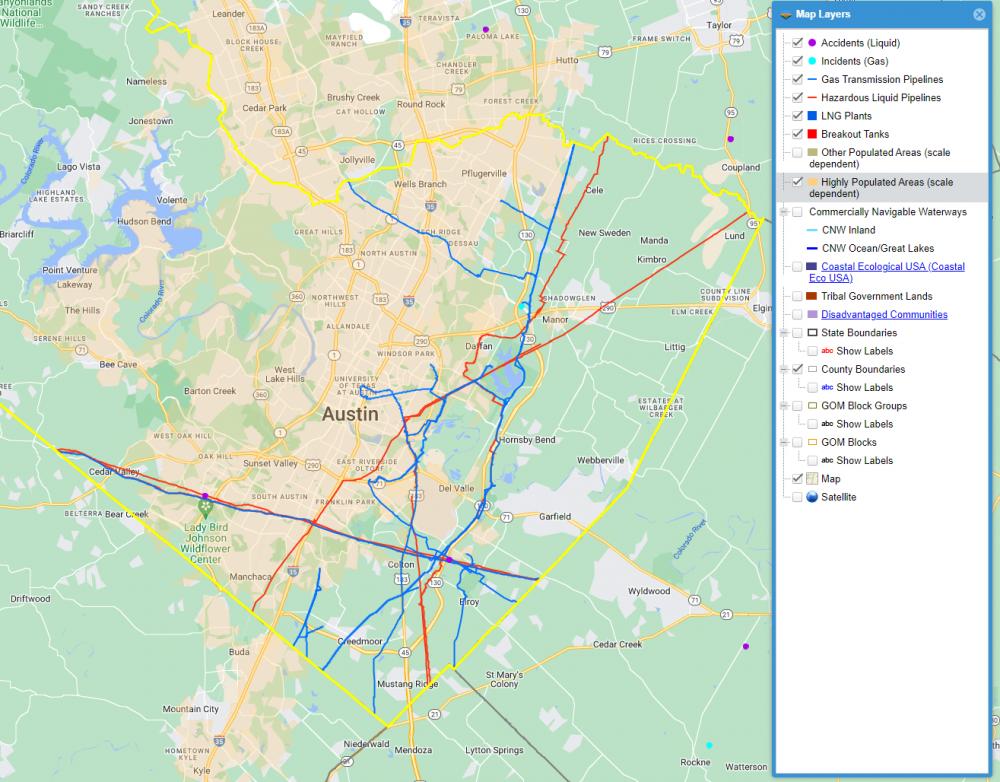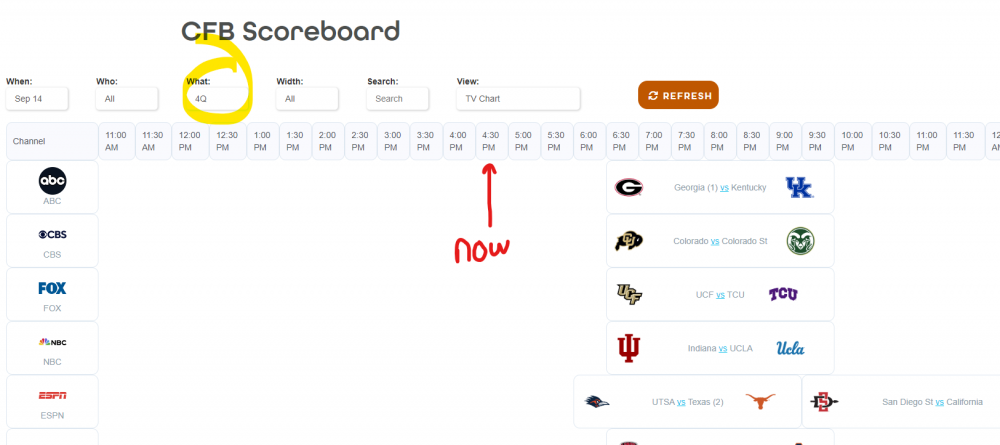
Everything posted by 0xdeadbeef
-
Getting old sucks
Ah yes. My "oh my god" moment. I was waiting in line in a fast food restaurant and there was monitor near the ceiling cycling through the various security cameras. When it flipped to the camera pointing at the people waiting to order, I thought "Ha, look at the bald spot on the top of that one guy's head." 30 seconds later when it flipped to it again I realized it was me. Started Rogaine days later. It never grew hair back, but it stopped the hair-loss. 10 out of 10; would recommend.
-
Cruz vs Allred - 2024
Link to a poll?
-
Cruz vs Allred - 2024
Allred keeps running a series of YouTube ads that play before my videos saying the "polls are tied" and showing a 41% to 41% graphic. Not sure what poll he's using but the polls are not tied. This race will not even be as close as the Beto result in 2018.
-
The Austin / Rainey St / Lake Serial Killer
I did not know that you can catch Rabies from a Spiked Drink.
-
Wyoming forfeits Volleyball matchup with San Jose State
Did you go through puberty as a male?
-
2024 port workers strike
Fuck this guy and fuck his threats against the US economy. If you strike and it can cripple the US economy, you can't be allowed to strike. Period. I want a politician to go after this union hard. Take a close look and I'm sure Mr. Dagget has some RICO violation lurking.
-
Pipeline Explosion in Deer Park
New video is new. The eyewitnesses they interviewed before made it sound something more like a heart attack that rolled over the curb and then picked up speed. This video seems like it's going faster than I would have expected. Hey, here's a thought, has anyone thought about putting those cement barriers around the pipeline? Anyone know what those things are called?
-
Texas vs. Mississippi State - 3:15pm on SEC Network
It's PTSD from a decade of suck.
-
Getting old sucks
But now she can't wear her sexy shoes for you.
-
Meanwhile in China
Just think of the marketing spin. You get to go on the Titanic and this time they can guarantee it won't sink.
-
Andrew Yang announces he is running for Mayor of NYC!
If you rank NYC mayor's by corruption, Adams probably doesn't even make the Top 10. The biggest tradition in NYC Politics is corruption itself: Exhibit A) Tammany Hall
-
Depression, OCD, and whatever else ails you between the ears
Not sure how old you are, but I've been on TRT for about 4 years (I'm 58), and it was absolutely the right decision for me. I would recommend going to a normal urologist not one of the modern 'mens clinics'. If you actually need testosterone, they'll prescribe it. I use Urology Austin and have nothing but good feedback. They have a bunch of offices in the area. Testosterone by itself isn't going to make you Jacked or lose weight, and it DOES NOT give you willpower of motivation. But if if your T has actually fallen off from where it was in years past, taking T will help your energy levels, your recovery, your interest in sex, your sexual performance and if you do put work in, it will help in muscle growth. You can't exercise your way out of a bad diet, but in my case TRT was just the little extra boost I needed to get some momentum going to get back in shape. TRT helps, but you have to do the work. There really isn't a lot of good options for OTC sleep aids that you can use repeatedly. Benadryl is my go to for a one-off, some people have luck with Melatonin, and there are a host of other OTC sleep aids. None of them really work well. Your best bet is google "how to sleep better" and follow some of the advice. i.e. Lower your stress, get some exercise, eat healthy, stay away from screens before bedtime, stay on a regular schedule, etc. Prescription Sleep medication, on the other hand, is just bad news. Ambien and related drugs F#$% people up. Google "Ambien memory loss stories" to see how it screws people up.
-
Русский корабль - иди нахуй
Yes, they're dumb, but they also have very little regard for human life. Which makes them dangerous in a conflict. We would never accept the type of losses the're taking. And still they press on.
-
Realignment talk not going away
I must have missed what changed for the ACC to start talking about changing revenue sharing. Why do they need to try and make FSu and Clemson happy? There is no unequal revenue sharing that is going to make everyone happy. Someone is going to get less and be unhappy. When the FSU and Clemson lawsuits were filed, Internet lawyers said the GOR was short, sweet, and unbreakable? If the lawsuit had a win-indicator, it seemed like it was 99.9% for an ACC win. Has something changed on that front? Is the Win indicator for the lawsuit dropping? That's the only thing that I can think of that would motivate the ACC to do this.
-
Pipeline Explosion in Deer Park
A aircraft strike is an absurd case, but as far as I can tell, there is only one less aircraft strike than car strikes in recent years. 'Proactive' regulations that don't actually solve problems are rarely a good use of time/energy/money/focus.
-
Pipeline Explosion in Deer Park
Based on the fact that cars hitting pipeline valves seems to be exceptionally rare, I would strongly argue that the part of the regulation above " by being placed at a safe distance from the traffic " is clearly working. Here's a page that has a seperate page for each year with pipeline accidents: https://en.wikipedia.org/wiki/List_of_pipeline_accidents_in_the_United_States I scanned a bunch of them, and I'm not seeing cars hitting pipelines as any type of problem. If you want to jump on the maintenance issues as causing pipeline accidents, you might have a good argument as there seems to be a lot of those. But cars hitting pipelines just isn't a happening.
-
Pipeline Explosion in Deer Park
A physical barricade like that is a protection against accidental problem, not against bad intent. How many accidents would these have stopped in the last 10 years? If the number is 1 or 2 then yes, it's an overreaction. If half the purple dots on the Houston map above would have been prevented by these then it's not an overreaction. If you put these up and a motorcycle goes right between them are you going to claim it's common sense to have a wall around the valves? What if a small plane crashes into one, will you claim it only makes sense to have a hardened dome? Show there is an actual problem that barriers would fix and people will support it, otherwise is seems like an overreaction.
-
Pipeline Explosion in Deer Park
If you want to see what pipelines are near you, there is a viewer on the bottom of this page: https://tx.pipeline-awareness.com/national_pipeline_mapping/ Austin: Meh Houston: Yikes.
-
Русский корабль - иди нахуй
I'm probably not the only one who is not familiar with every shithole russian town. The big bada boom in Tver is 325 miles from Ukraine. North of Moscow.
-
Pipeline Explosion in Deer Park
Finally some details on the driver. Not from the police of course, but from the local TV News. See the video at the bottom of this page: https://abc13.com/post/deer-park-pipeline-explosion-energy-transfer-not-anwering-questions-la-porte-evacuations/15316954/ In a nutshell, from eyewitnesses: An elderly woman with glasses drove a white SUV at slow speed out the back of a WalMart parking lot, through brush, down an embankment, picked up speed, went through a fence and into the value. The car was thrown up in the air and 'fire was everywhere'. Doesn't sound like the driver survived. That would explain why the FBI ruled it not terrorism. As of 8pm Tuesday, it sounds like it was still burning.
-
COVID-19 vaccine discussion
I made a mistake. I logged directly into X. I should know better. The top post that X thought I'd be interested in: TURBO CANCER. yep, I found out what the anti-vaxxers are up to today. This can't be real. This HAS to be a 4-chan prank where they made up the dumbest shit they could think of and planted it in the media to see what would take off. I hate stupid people so much.
-
Pipeline Explosion in Deer Park
I want to know about the 'preliminary reports' that say a car struck the valve. Those preliminary reports don't seem to be on the web anywhere that Google will show me. The partially burnt car in the TV News drone footage is a good 30 feet from the fire. Is that the car? Was it a Drunk Driver at 10am in the morning? A domestic Terrorist? A former employee? So many questions. My attention span is short these days. I need answers now.
-
Prediction Contest 2024, Week 4, ULM @ Texas
UT 63 ULM 6 280 yards (Arch only plays 1 series in the 2nd half)
-
cfbscoreboard.com
Seems to be a small bug in the "What:" filter box. All options work as expected except 4Q and 4Q or OT. Chrome Version 128.0.6613.120 on Windows.
-
Русский корабль - иди нахуй
I think you're looking at a different scenario . I'm less concerned about him using a nuke to try and win his little SMO and more worried about him using one if he thinks his end is near. A final FU. If things in Moscow start exploding and he perceives he's lost support of his formerly-loyal assistants, is he the type to put a gun in his mouth like Hitler? Or would he push the Button first out of spite? The best ending would be for someone on the inside quickly remove him from power and take the option out of his hand.












